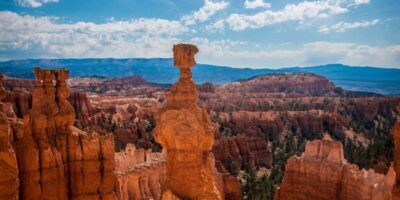Pioneering Women in Aviation History
Women have made significant contributions to aviation, often overcoming substantial barriers. Their achievements in aviation history are noteworthy, paving the way for future generations.
Amelia Earhart
Amelia Earhart is one of the most iconic figures in aviation. Born in 1897 in Kansas, Earhart developed a passion for flying at a young age. She became the first woman to fly solo across the Atlantic Ocean in 1932. Her flight from Newfoundland to Ireland took 15 hours and 18 minutes, solidifying her status as an aviation pioneer.
Earhart’s contributions extended beyond her flights. She was an advocate for female pilots and worked to break gender norms in aviation. She co-founded the Ninety-Nines, an international organization of women pilots, in 1929. Her mysterious disappearance in 1937 during an attempt to circumnavigate the globe remains a topic of fascination and speculation.
Harriet Quimby
Harriet Quimby was the first American woman to earn a pilot’s license, receiving hers from the Aero Club of America in 1911. Born in Michigan in 1875, Quimby was also a successful journalist and screenwriter. She was known for her daring flights and became the first woman to fly across the English Channel in 1912.
Quimby’s life was cut tragically short when she died in an aircraft accident later that same year. Nevertheless, her achievements had a lasting impact, inspiring many other women to pursue aviation careers.
Bessie Coleman
Born in 1892 in Texas, Bessie Coleman broke multiple barriers. Unable to find flight training opportunities in the United States due to racial and gender discrimination, Coleman went to France. She earned her pilot’s license from the Fédération Aéronautique Internationale in 1921, becoming the first African American woman and first Native American to hold an international pilot’s license.
Coleman performed as a stunt pilot, thrilling crowds with her aerial acrobatics. She used her platform to speak out against racial discrimination and encouraged others to follow in her footsteps. Sadly, she died in a plane crash in 1926, but her legacy continues to inspire.
Jacqueline Cochran
Jacqueline Cochran was a pioneering aviator known for her speed records. Born in Florida in 1906, she learned to fly in the 1930s. Cochran became the first woman to break the sound barrier in 1953. Throughout her career, she set numerous records for speed, distance, and altitude.
During World War II, Cochran played a crucial role in the Women Airforce Service Pilots (WASP) program, which trained female pilots to fly military aircraft. Her leadership and advocacy efforts were instrumental in opening doors for women in both civilian and military aviation.
Willa Brown
Willa Brown was another trailblazer in aviation. Born in Kentucky in 1906, she became the first African American woman in the United States to earn a commercial pilot’s license in 1938. Brown co-founded the National Airmen’s Association of America, advocating for African Americans in aviation.
During World War II, she helped train African American pilots for the Tuskegee Airmen, the first African American military aviators in the U.S. Army Air Corps. Brown’s dedication to promoting aviation careers for African Americans and women left a lasting impact on the field.
Pancho Barnes
Florence Lowe Pancho Barnes was a colorful figure in aviation history. Born in California in 1901, she learned to fly in the 1920s. Barnes set a women’s air speed record in 1930, breaking Amelia Earhart’s previous record. She was known for her adventurous spirit and daring flights.
Barnes established the Happy Bottom Riding Club, a popular social spot for aviators and test pilots in the Mojave Desert. Her contributions to aviation and her larger-than-life persona made her a legendary figure in the field.
Ann Baumgartner Carl
Ann Baumgartner Carl was a pioneering test pilot. Born in 1918 in New Jersey, she served as a WASP pilot during World War II. In 1944, she became the first American woman to fly a jet when she piloted the Bell YP-59A.
Carl’s work as a test pilot and her experiences as a female aviator during the war highlighted the capabilities of women pilots. Her contributions showcased the importance of women in aviation and their potential to achieve groundbreaking feats.
Elinor Smith
Elinor Smith became the youngest licensed pilot in the world at age 16 in 1927. Born in New York in 1911, her bold and daring flights earned her widespread recognition. In 1928, she flew under all four of New York City’s East River bridges, a feat never replicated.
Smith set multiple altitude records and worked as a test pilot, contributing valuable insights to aircraft development. Her long and storied career in aviation serves as a testament to her skill and determination.
Ada Rogato
Ada Rogato was a prominent Brazilian aviator known for her long-distance solo flights. Born in 1910 in São Paulo, she earned her pilot’s license in 1935. Rogato became the first woman in Brazil to receive a glider pilot’s license and a commercial pilot’s license.
In 1951, she embarked on a solo flight from Brazil to the United States, covering over 51,000 kilometers. Her achievements in aviation drew international attention and demonstrated the potential of women pilots in South America.
Jerrie Mock
Geraldine Jerrie Mock was the first woman to fly solo around the world. Born in Ohio in 1925, she completed her historic flight in 1964. Mock’s journey covered 29,000 miles and took 29 days, overcoming numerous challenges along the way.
Her accomplishment earned her a place in the history books and inspired future generations of female aviators. Mock’s determination and skill in completing the flight demonstrated the capabilities of women in aviation.
“`
